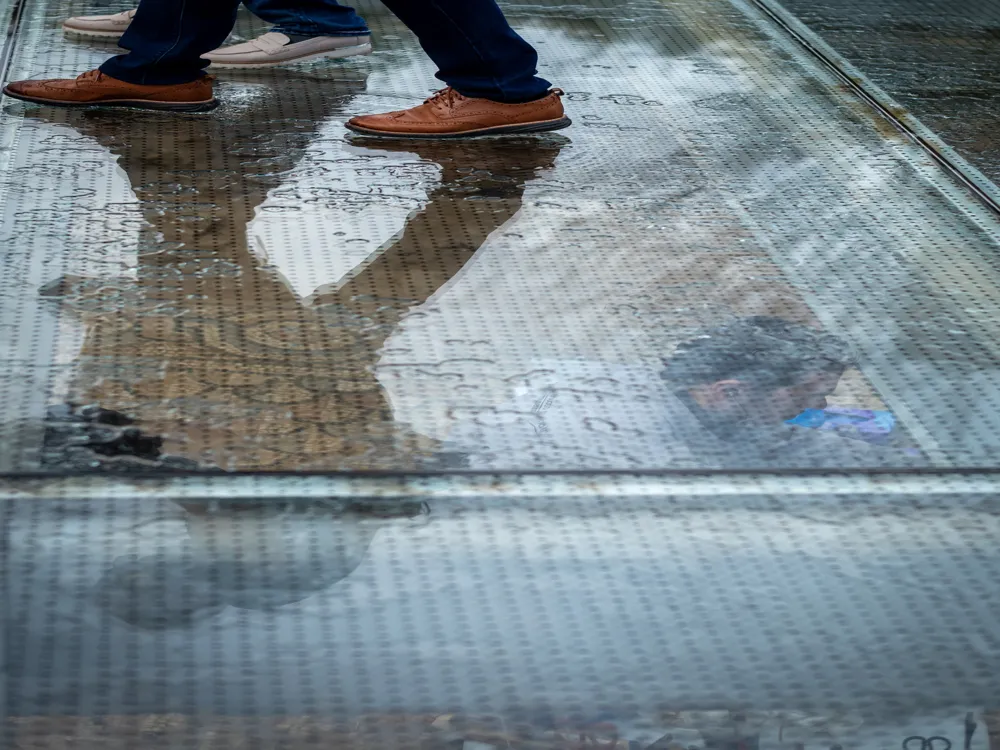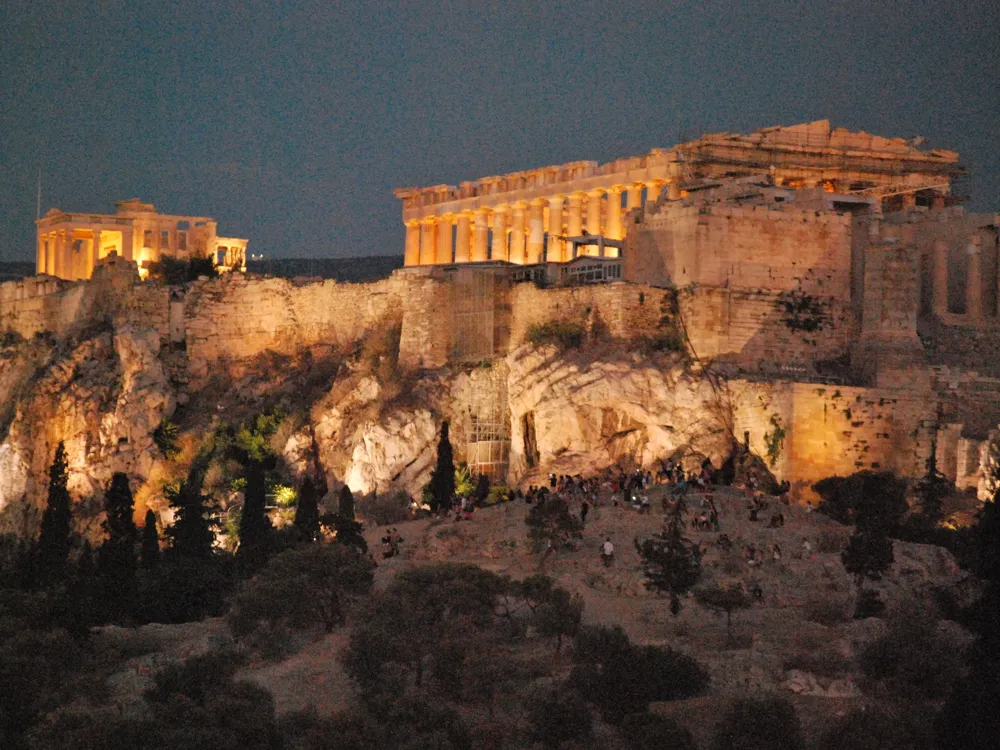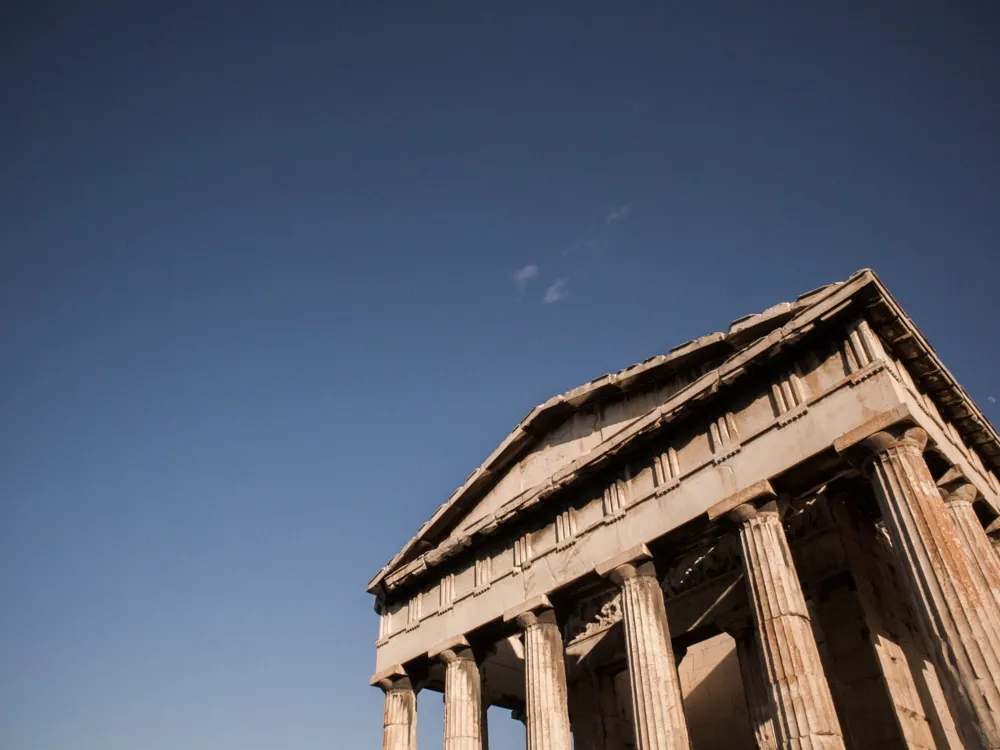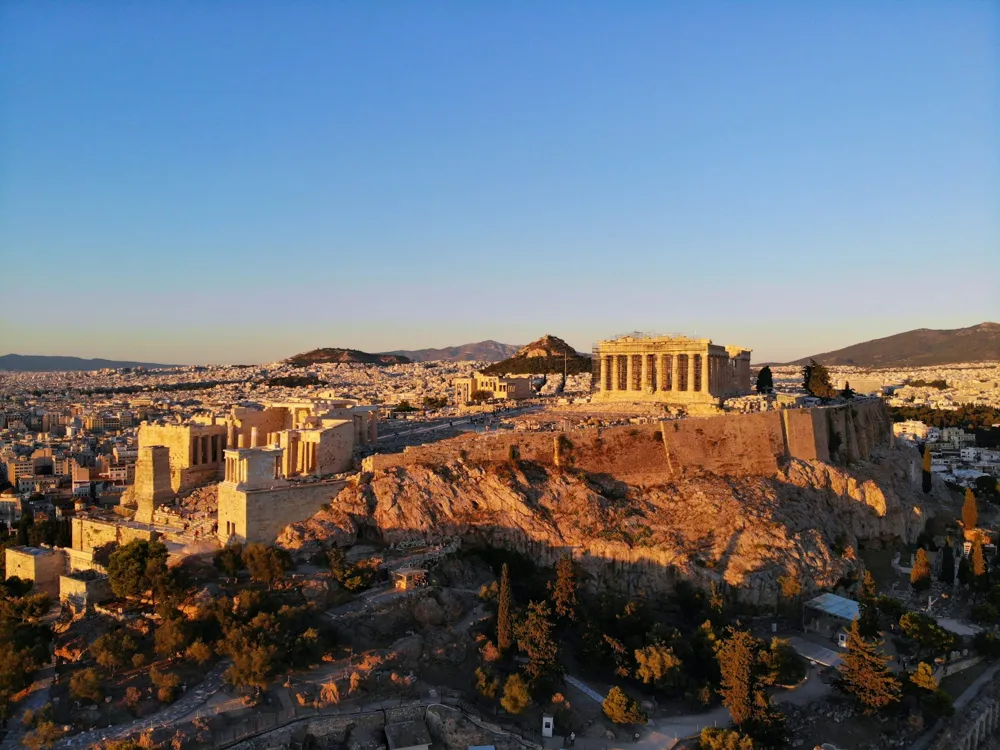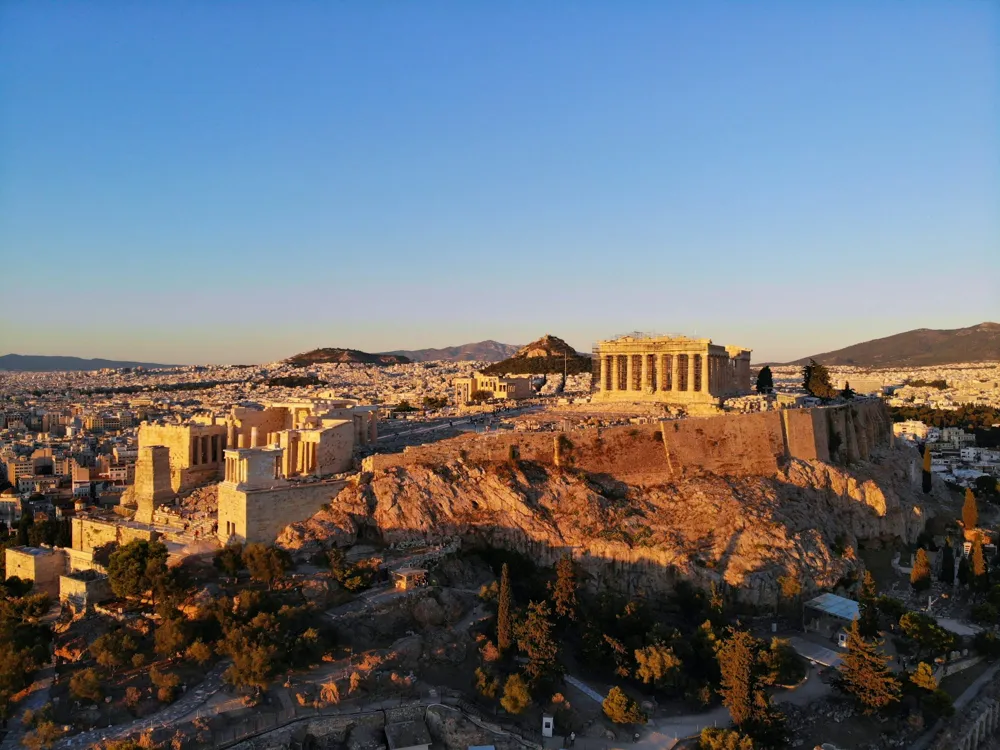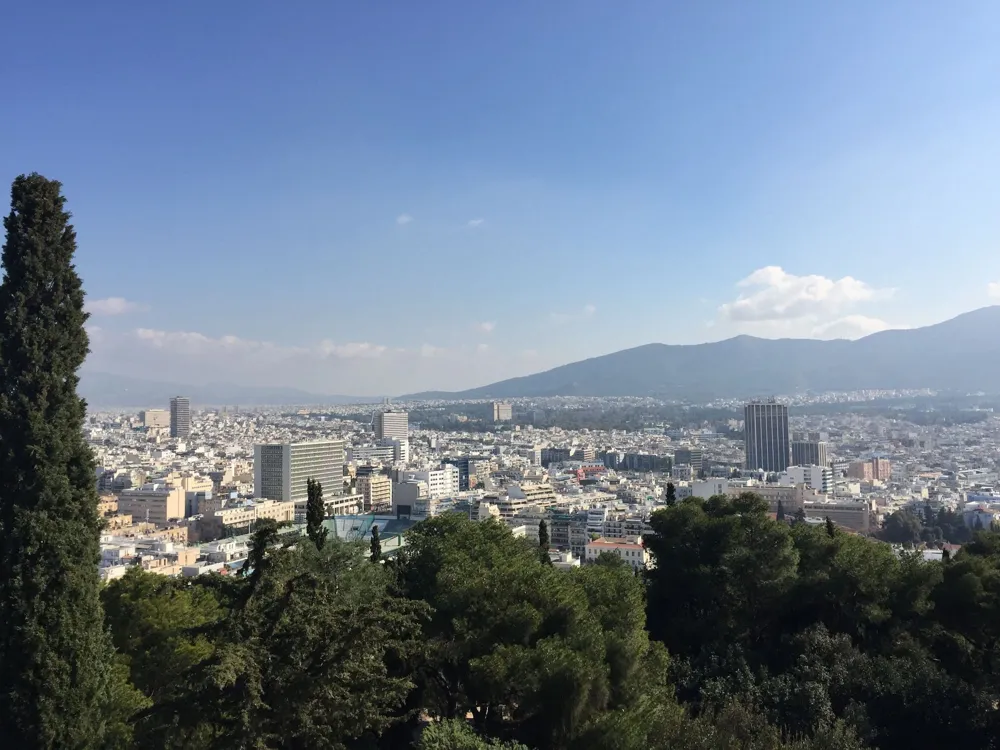The Acropolis Museum in Athens stands as an ultramodern architectural phenomenon, harmoniously incorporating the rich history of ancient Greece with contemporary design. Opened in 2009, this gallery is devoted to conserving and showcasing the vestiges set up on the Acropolis, a literal hilltop that hosts the remnants of several ancient structures of great architectural and major significance, including the Parthenon. The architectural design of the Acropolis Museum is a masterful mix of ancient glory and ultramodern invention. Designed by Bernard Tschumi, with Michael Photiadis as the original collaborating mastermind, it spans over 14,000 square metres ( 150,000 sq ft) of exhibition space. Early morning or late afternoon visits are ideal to avoid crowds. The museum is less crowded on weekdays. Consider joining a guided tour for a comprehensive understanding of the exhibits and their historical significance. Comfortable walking shoes are a must, and dressing in layers is advised due to the varying temperatures inside and outside the museum. Photography is allowed in most areas, but flash and tripods are prohibited. Use natural light to your advantage for the best photos. Make use of the cloakroom for large bags and umbrellas. The museum also has a café and restaurant with stunning Acropolis views. The Acropolis Museum is easily accessible by colourful modes of transport. The closest metro station is Acropolis on Line 2, just a short walk from the gallery. Motorcars and wagonettes also service the area, with stops near the gallery. For those driving, several parking areas are available in the vicinity. Also, the gallery is a popular stop for hop-on, hop-off stint motorcars, making it easily accessible for excursionists exploring Athens. Read More:Overview of the Acropolis Museum of Athens
The gallery's layout is a thoughtful trip through history, beginning with shows from the Greek Citation Age to Roman and intricate Greece. The top bottom, aligned with the Parthenon itself, offers a unique perspective of the ancient tabernacle, displaying the Parthenon marbles in their original configuration as much as possible.
Beyond its shows, the gallery’s design is a story in itself. positioned just 280 metres southeast of the Parthenon, it stands over ancient remains, visible through its glass bottoms. The integration of these remains with the ultramodern structure is a testament to the harmonious concurrence of the past and present. The Acropolis Museum not only displays history; it's a part of it.Architecture of the Acropolis Museum
The structure's foundation rests on more than 100 concrete pillars, swimming over an archaeological point that predates the gallery. This design choice was essential for conserving the remains while enabling callers to view them as they walk through the gallery.
The gallery's use of glass is particularly striking. The expansive use of transparent accoutrements serves two purposes: it allows natural light to illuminate the vestiges and provides stirring views of the Acropolis. This transparent approach creates a dialogue between the shows and their literal environment.
The Parthenon Gallery, positioned on the top bottom, is maybe the most famous point of the gallery. This space recreates the confines and direction of the Parthenon, allowing callers to witness a profound connection with the ancient tabernacle. Then, the Parthenon friezes are displayed in direct line of sight to the tabernacle, creating an unequalled visual narrative.Tips for Visiting Acropolis Museum
Best Time to Visit
Guided Tours
Dress Appropriately
Photography Tips
Museum Facilities
How To Reach Acropolis Museum
Acropolis Museum
Athens
₹ 25,800 onwards
View athens Packages
Weather :
Tags : Museum
Timings : 08:00 - 20:00 Closed on Monday
Entry Fee : EUR 5
Planning a Trip? Ask Your Question
Athens Travel Packages
View All Packages For Athens
Top Hotel Collections for Athens

Private Pool

Luxury Hotels

5-Star Hotels

Pet Friendly
Top Hotels Near Athens
Other Top Ranking Places In Athens
View All Places To Visit In athens
Faq on Athens
What is the Acropolis Museum in Athens?
The Acropolis Museum in Athens is a renowned archaeological museum located near the Acropolis of Athens. It houses artifacts found on the Acropolis hill and its slopes, providing insights into ancient Greek history and culture.
What are the opening hours of the Acropolis Museum?
The Acropolis Museum typically opens from Tuesday to Sunday, with varying opening hours throughout the year. It's advisable to check the official website for the most up-to-date information on opening hours.
How much does it cost to visit the Acropolis Museum?
Admission fees to the Acropolis Museum vary depending on factors such as age, nationality, and whether any discounts or special offers apply. It's best to consult the museum's website or contact them directly for accurate pricing information.
What can I see at the Acropolis Museum?
Visitors to the Acropolis Museum can explore a wide range of exhibits, including statues, artifacts, and architectural fragments from the Acropolis and its surrounding area. Highlights include the Parthenon Gallery, the Archaic Gallery, and the Caryatids.
Is the Acropolis Museum accessible to people with disabilities?
Yes, the Acropolis Museum is equipped with facilities to accommodate visitors with disabilities. These include wheelchair access, elevators, accessible restrooms, and tactile paths for the visually impaired.
View athens Packages
Weather :
Tags : Museum
Timings : 08:00 - 20:00 Closed on Monday
Entry Fee : EUR 5
Planning a Trip? Ask Your Question
Athens Travel Packages
View All Packages For Athens
Top Hotel Collections for Athens

Private Pool

Luxury Hotels

5-Star Hotels

Pet Friendly
Top Hotels Near Athens
Other Top Ranking Places In Athens
View All Places To Visit In athensFaq on Athens
What is the Acropolis Museum in Athens?
The Acropolis Museum in Athens is a renowned archaeological museum located near the Acropolis of Athens. It houses artifacts found on the Acropolis hill and its slopes, providing insights into ancient Greek history and culture.
What are the opening hours of the Acropolis Museum?
The Acropolis Museum typically opens from Tuesday to Sunday, with varying opening hours throughout the year. It's advisable to check the official website for the most up-to-date information on opening hours.
How much does it cost to visit the Acropolis Museum?
Admission fees to the Acropolis Museum vary depending on factors such as age, nationality, and whether any discounts or special offers apply. It's best to consult the museum's website or contact them directly for accurate pricing information.
What can I see at the Acropolis Museum?
Visitors to the Acropolis Museum can explore a wide range of exhibits, including statues, artifacts, and architectural fragments from the Acropolis and its surrounding area. Highlights include the Parthenon Gallery, the Archaic Gallery, and the Caryatids.
Is the Acropolis Museum accessible to people with disabilities?
Yes, the Acropolis Museum is equipped with facilities to accommodate visitors with disabilities. These include wheelchair access, elevators, accessible restrooms, and tactile paths for the visually impaired.





